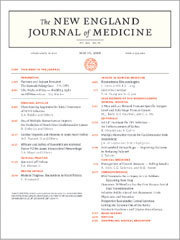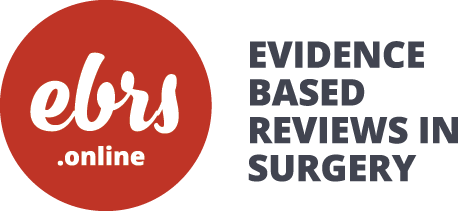Featured Article
 Bilmoria KY, Chung JW, Hedges, et al. National cluster-randomized trial of duty-hour flexibility in surgical training. N Engl J Med 2016;374(8):713-727
Bilmoria KY, Chung JW, Hedges, et al. National cluster-randomized trial of duty-hour flexibility in surgical training. N Engl J Med 2016;374(8):713-727
Expert Reviews
Methodological Reviewer: Neel Datta MD, MSc(HEPM), FRCSC University of Calgary
Clinical Reviewer: Anand Govindarajan, MD, MSc, FRCSC, Department of Surgery, University of Toronto
Clinical Reviewer: Daniel L. Dent MD, FACS, University of Texas Health Science Center, San Antonio
Supplementary Articles
Supplement to: Bilmoria KY, Chung JW, Hedges, et al. National cluster-randomized trial of duty-hour flexibility in surgical training. N Engl J Med 2016;374(8):713-727
Guyatt GH, Sackett DL, Cook DJ, for the Evidence Based Medicine Working Group. Users’ Guides to the Medical Literature. II. How to Use an Article about Therapy or Prevention. A. Are the Results of the Study Valid? JAMA 1993 Dec 1; 270(21): 2598-2601
Guyatt GH, Sackett DL, Cook DJ, for the Evidence Based Medicine Working Group. Users’ Guides to the Medical Literature. II. How to Use an Article about Therapy or Prevention. B. Are the Results of the Study Valid? JAMA 1994 Jan 5; 271(1): 59-63
Questions
Please read the above articles and be prepared to discuss the following:
- What is the clinical question being addressed?
- Was the assignment of patients to treatment randomized and concealed?
- Were all patients who entered the trial properly accounted for and attributed for at is conclusion?
- Were patients, their clinicians and study personnel “blind” to treatment?
- Were the groups similar at the start of the trial?
- Aside from the experimental intervention, were the groups treated equally?
- How large and precise was the treatment effect?
- Can the results be applied to my patient care?
- Were all clinically important outcomes considered?
- Are the likely treatment benefits worth the potential harm and costs?
- State the conclusion. Have the authors addressed the clinical question posed?
- Does the evidence support the conclusion?
